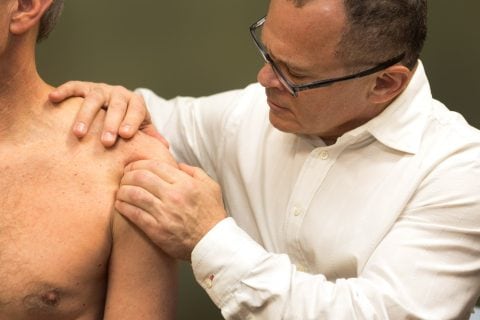Expert Treatment for Shoulder Conditions
The shoulder is one of the most versatile joints in the body, providing a wide range of motion with interaction of over 20 muscles effecting shoulder function. Because this joint provides so much motion it is at an increased risk of injury.
The shoulder is commonly affected by the demands of active lifestyles. Pain and soreness caused by overuse, trauma, or degenerative conditions (such as arthritis) can decrease activity and quality sleep.
ValleyOrtho’s physicians have decades of experience diagnosing and treating all kinds of shoulder injuries and conditions, and utilize the most advanced surgical and nonsurgical techniques.

